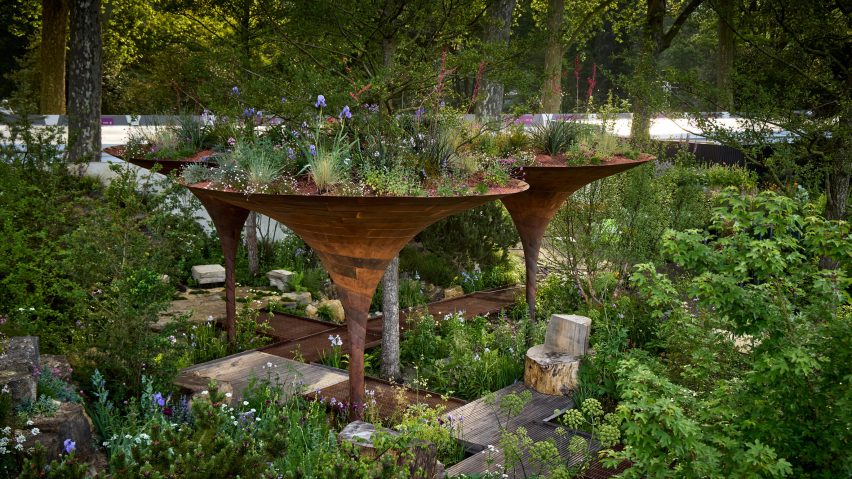
Studio Weave and Tom Massey design WaterAid garden with rain-harvesting pavilion
A weathering-steel pavilion featuring fluid curves inspired by the movement of water formed the centrepiece of this garden presented by Studio Weave and landscape designer Tom Massey at the Chelsea Flower Show.
The garden was created by Massey and Studio Weave founder Je Ahn for international not-for-profit WaterAid, which works to provide clean water to communities around the world.
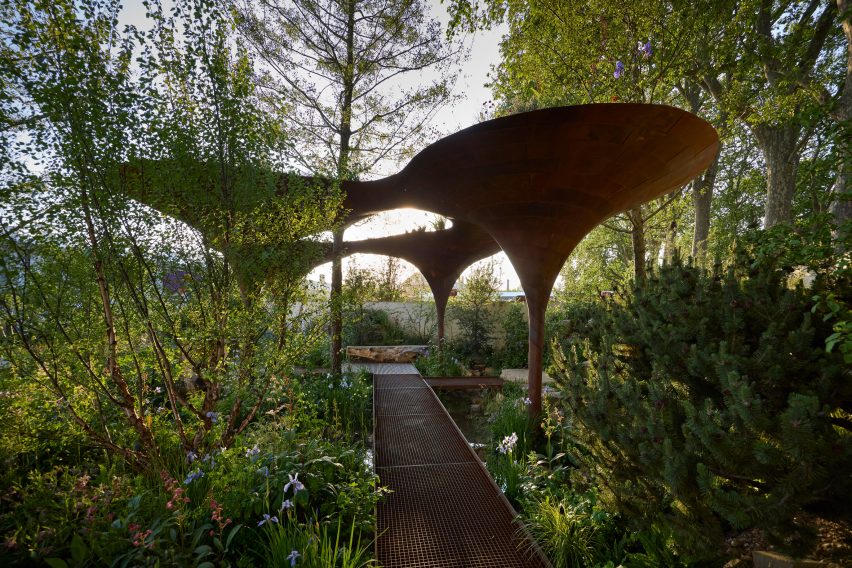
With a focus on sustainable water management, the WaterAid garden featured colourful planting arranged around the sculptural pavilion, which collected rainwater and funnelled it into a collection tank to be used during dry periods.
"We wanted to demonstrate water-related design features such as rainwater harvesters, swales and depressions, as well as the planting," Je Ahn told Dezeen.
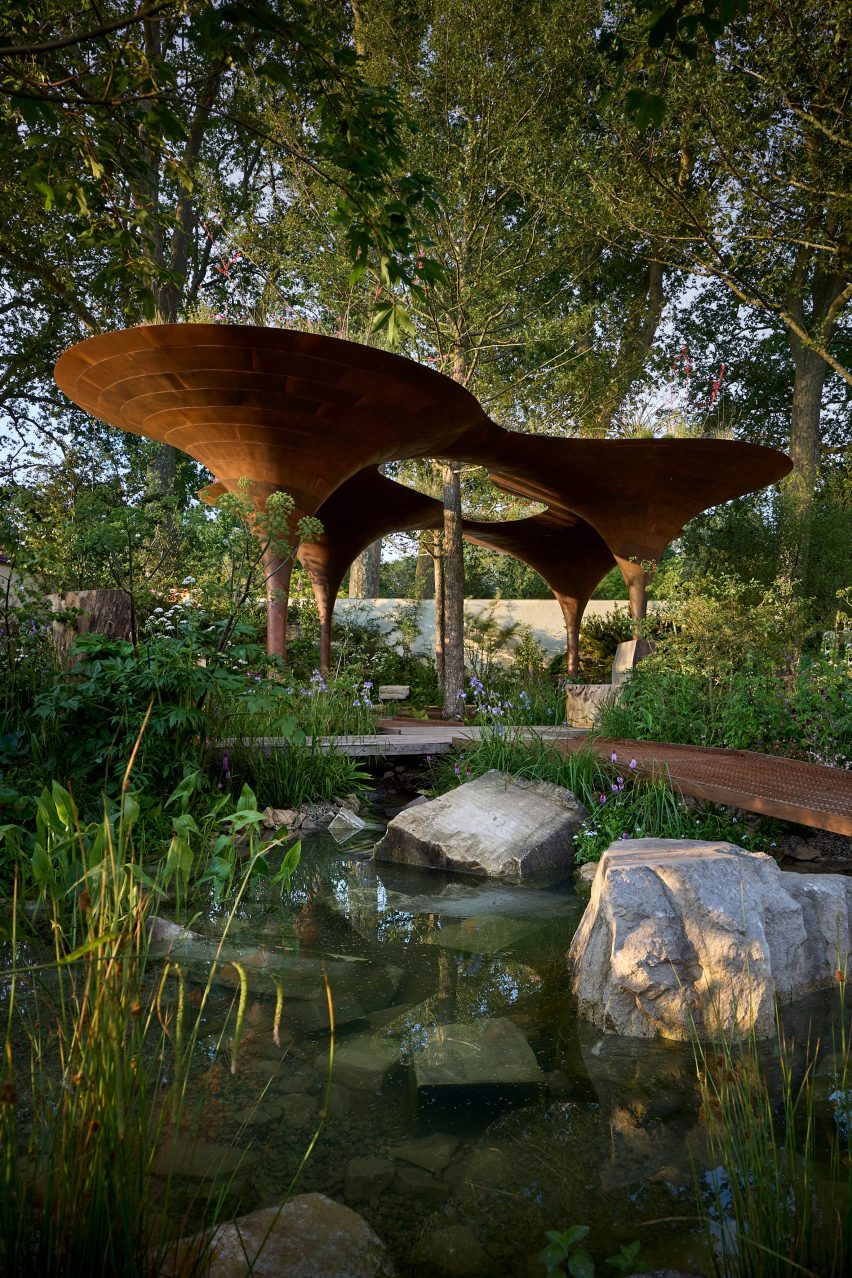
"The plants are ordered, from drought-tolerant arid species on the upper levels through to water-loving aquatic plants further down," Ahn added. "Part of the aim is to demonstrate a diversity of design ideas to the public."
Ahn and Massey wanted to raise awareness of the impacts of climate change, including droughts and flooding caused by heavy rain, which are particularly keenly felt by gardeners.
The pavilion at the centre of the garden was designed to harvest rainfall so it could be used later for irrigating plants.
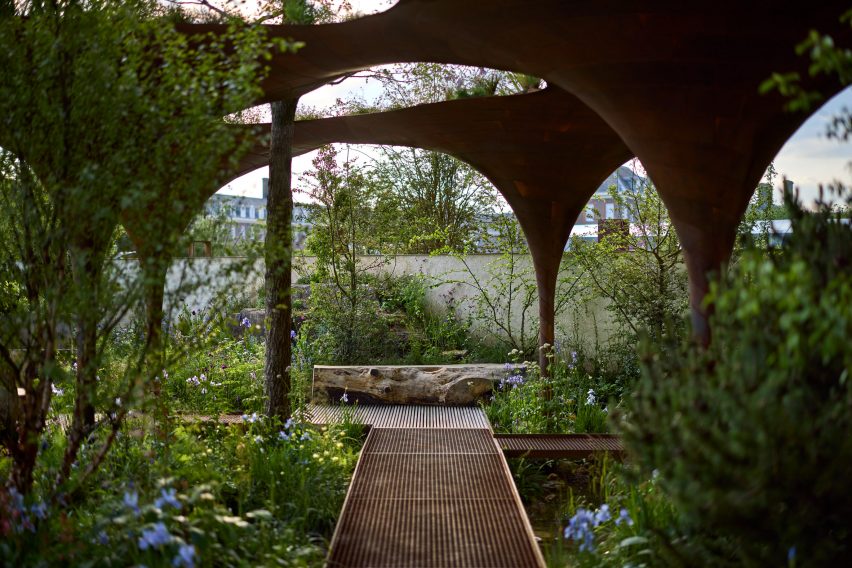
The structure was made from thin steel strips formed around bent rebar using a process Ahn described as "akin to dressmaking".
Slender columns fanned outwards to form a large roof that provided shade during sunny days. Rain falling on the planted roof passed through a triple-layered growing medium before being funnelled down to a storage tank.
This aspect of the project references WaterAid's work in areas prone to water shortages, where the charity uses affordable rainwater collection methods to bring essential water supplies to households and schools.
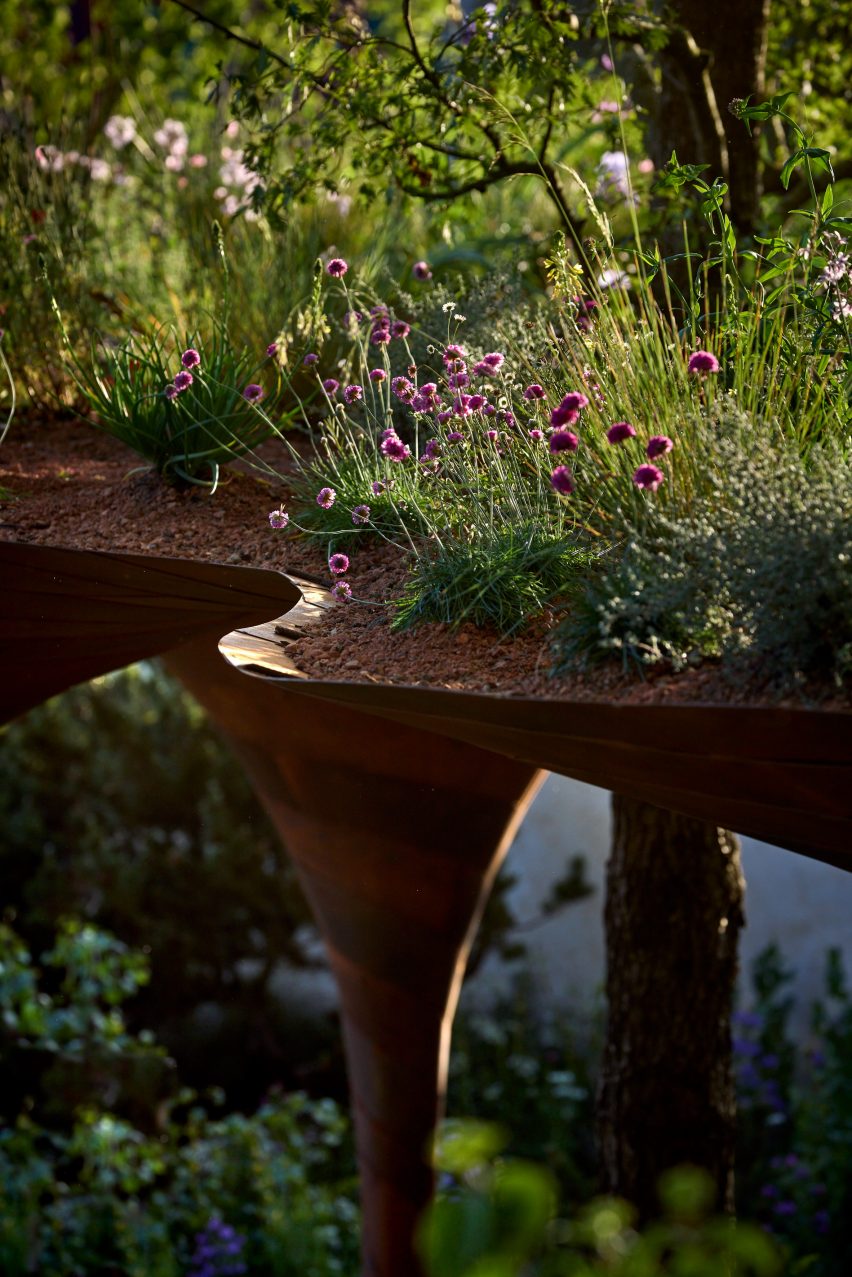
Curved openings in the pavilion's roof ensured sunlight reached every planted area for at least one or two hours per day. The resulting form was both structurally efficient and strong enough to support the required depth of soil on the roof.
Ahn explained that weathering steel was used for the pavilion because of "its structural strength, robustness and longevity, as well as its aesthetic quality."
"In order to control the shape and structure, all of the detailed components were 3D modelled," he added. "Each of the 299 steel sheets was numbered and laser cut to millimetre precision."
Materials used to create the garden's walkways and seating were either reclaimed or repurposed to minimise the project's carbon footprint. Designer Sebastian Cox created beech timber seating and all of the surfaces are permeable so water could pass through.
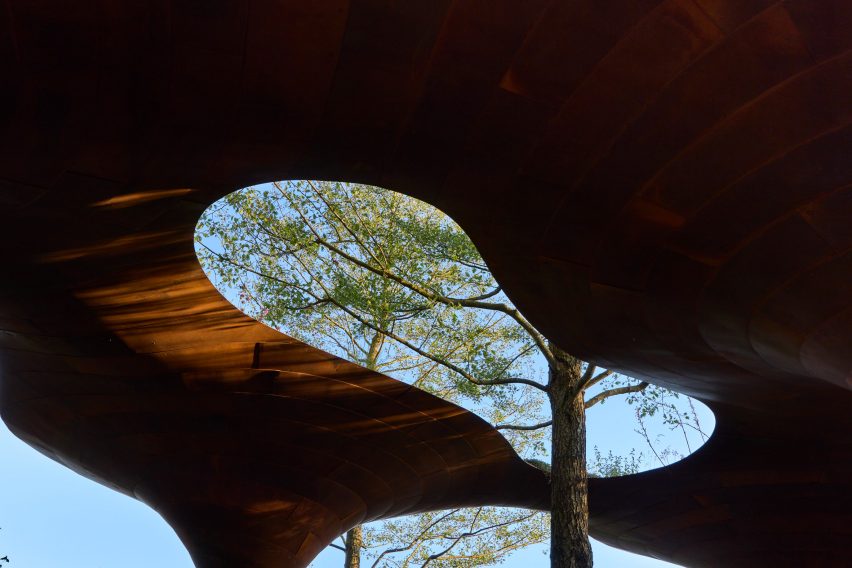
The planting featured a variety of colourful and resilient species selected for their ability to cope with varying amounts of rainfall. The lower areas were denser and wetter, with sparser, drier planting on the upper levels.
These included water violet, which Ahn said "can indicate whether a water source is clean or polluted," and alder trees, which he added "have nodules on the roots that can absorb nitrogen and toxic heavy metals from the ground, improving soil health and fertility."
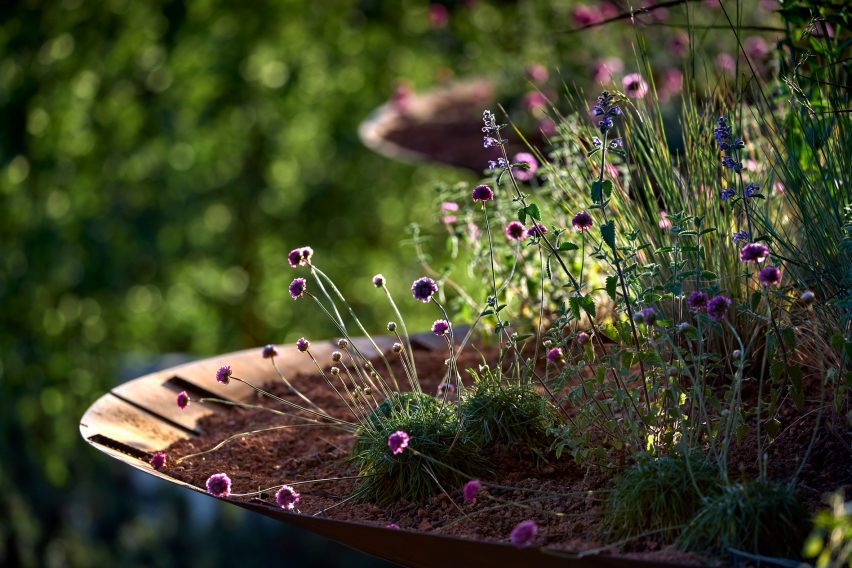
The WaterAid garden, which was awarded a prestigious RHS Gold Medal, was Ahn's first participation in the Chelsea Flower Show and Massey's fourth.
It was designed to be relocated to a permanent home in the north of England, where it will help to educate the public about rainwater collection.
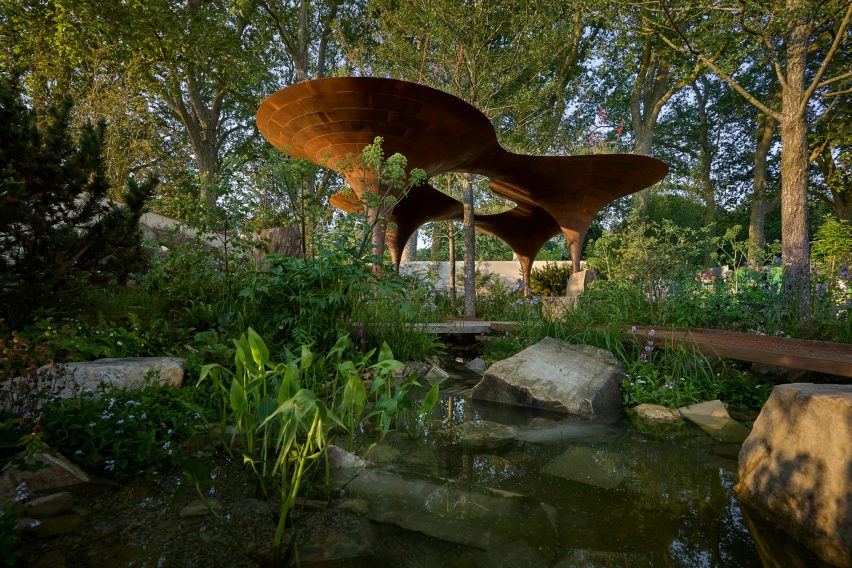
Ahn and Massey have worked together for over six years on projects including a greenhouse installed in east London to highlight the city's rising temperature.
London-based Studio Weave works on a wide range of projects in the cultural, educational, heritage, arts, public realm and residential sectors and recently completed a pink-concrete house in South Korea.
Tom Massey founded his London studio in 2015 and creates gardens for private and commercial clients.
The photography is by Alister Thorpe.